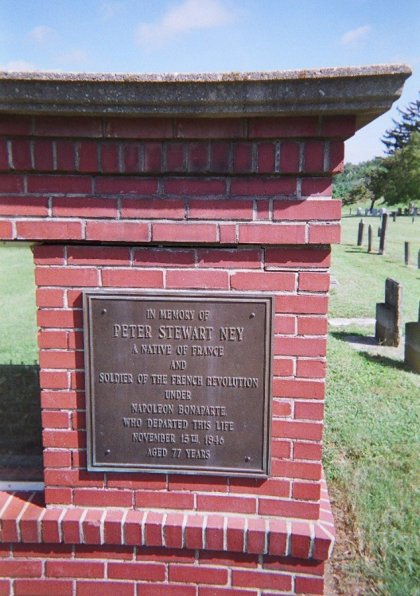Marshal Ney Survives Death November 6, 2016
Author: Beach Combing | in : Modern , trackback
Marshal Ney was Napoleon’s greatest general and even those who, like Beachcombing, loathe old Boney, feel some regret when they read of how Ney was executed 7 Dec 1815. The great man stood in front of the firing squad and himself gave the order to fire after telling his soldiers: ‘I have fought a hundred battles for France and none against her.’ But dry your tears, for Beach has recently learnt that Marshal Ney did not really die; or at least he did not according to this marvelous Victorian conspiracy theory. The story appeared in the Southern Reporter (12 Jun 1879), 4 and reveals that Ney was actually smuggled out of France in an ending that sounds like it was written by Dumas drunk.
A correspondence from the city of Rowan, North Carolina, recently published in the New York Herald, revives a curious and all but forgotten story, having for its hero the famous Marshal Ney. The Marshal was generally believed to have been shot to death in the Luxembourg Garden on the 7th of December, 1815; but it was subsequently alleged that he only underwent a mock execution, and escaped with the connivance of the French Government to America, where he kept school for many years, died of old age in 1846 and was buried in the graveyard of Third Greek Assembly House Church in the above-mentioned town… An agent of the leading American journal has recently been engaged in instituting an inquiry into the evidence producible in support of this statement, which would appear to be generally credited throughout North Carolina. He has visited old inhabitants, former scholars of the Marshal, and collected from these and other sources a number of highly-interesting anecdotes respecting the latter years of the stout old Frenchman who, whether he really was the hero of the retreat of Moscow or not, succeeded in convincing everybody acquainted with him in America that his claims to that character were genuine.
The seed behind this bizarre legend seems to have been a local eccentric who announced himself to be Ney.
It would appear that he was known in North Carolina as Peter Stuart Ney, ‘admirable schoolmaster and brilliant mathematician.’ As a general rule, he was taciturn, uncommunicative respecting his past life, and reserved in his manner; but now and then, when his tongue was loosed by few extra glasses of wine, ‘he would fight his battles o’er again.’ Upon one occasion, warmed with good liquor, in an animated conversation with one Colonel Hilton, who committed his narrative to paper, he related in detail the circumstances of his supposed execution. The soldiers selected for the simulated performance of that dismal duty were men who had previously stood under his immediate command, and secret orders were given to them to ‘fire high,’ which orders were communicated to him by the officer who conducted him from his prison to the Luxembourg. When the volley was delivered he fell to the ground, face downwards, as had been concerted between him and his august protectors, was declared by the surgeons in attendance to be dead, and was given over to the charge of friends, who conveyed him to Bordeaux. There he embarked in merchant ship bound to Charleston, where he landed on the 23rd February, 1816.
And what other clues were there that Ney was, well, Ney?
He was an excellent swordsman, passionately fond of fencing, even when his physical powers began fail him, and always eager to impart instruction in the use of foils and sabre to his scholars. The news of the Duke of Reichstadt’s death was brought to him one day during school hours in a letter from an Imperialist friend resident in Jersey. On reading this missive he displayed extraordinary emotion, flung the letter down upon the floor of the class-room, stamped it vehemently, and exclaimed, ‘ The Imperial Prince is dead, and all my hopes are destroyed’ [love this] at once dismissing his pupils from their studies, and granting them week’s holiday. He died on the 14th of October, 1846, in the house of Mr Ford, Rowan. His last words were ‘Bessieres has fallen, the Old Guard is beaten, now I will die!’ Some years after his death a few of his old scholars subscribed together to purchase marble slab, which they placed upon his grave. It bears the inscription, ‘in memory of Peter Ney, a French hero.’
The inscription at the head of the post is rather different.
Beach came across this partisan of North Carolina Ney online. Anything else on the origins or the unwinding of this story: drbeachcombing AT yahoo DOT com


